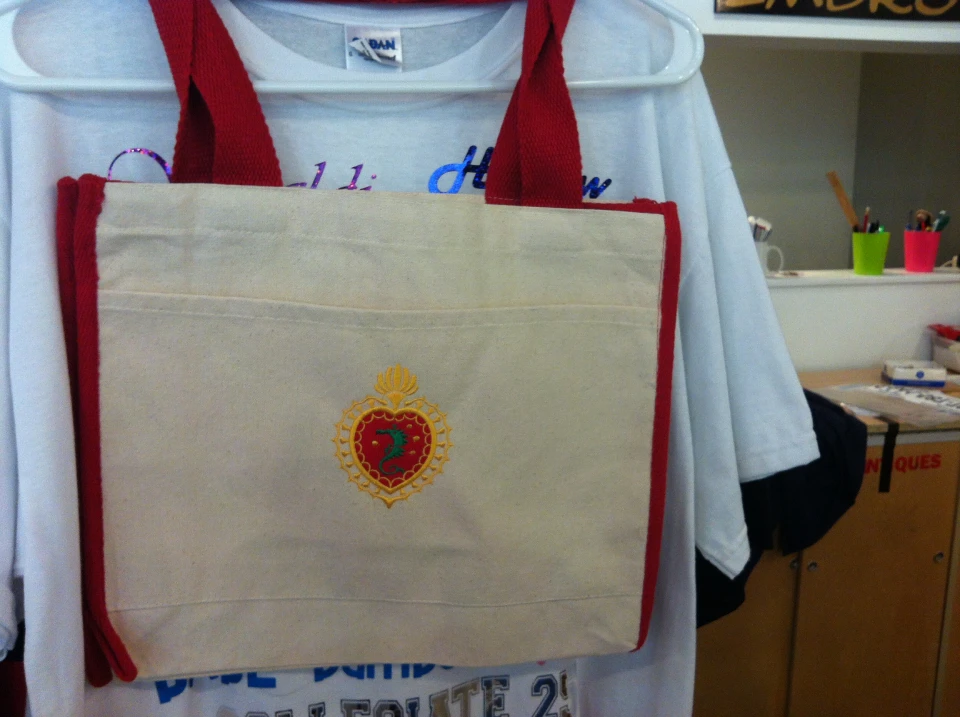The Art of Custom Embroidery: Opening the Secrets to Creating Special and Remarkable Designs
The tricks to developing custom embroidery designs that mesmerize the eye and leave a long-term impression lie in a delicate equilibrium of strategy, creativity, and interest to information. As we dive right into the globe of custom-made needlework, we discover the nuanced interplay between thread selection, stitch complexity, and design customization that boosts a mere garment to a work of art.
Choosing the Right Needlework Threads
When picking embroidery threads, what key factors should you take into consideration to make certain the ideal results for your personalized designs? The choice of embroidery string is important in identifying the final end result of your embroidered style. One of the key considerations is the product of the string. Different materials such as cotton, polyester, rayon, and silk supply varying levels of luster, toughness, and structure. It is important to select a string material that enhances the material you are embroidering on and straightens with the preferred appearance of the design.
Thicker strings can include dimension and structure to your style, while finer strings are suitable for detailed information and tiny text. Additionally, thinking about the shade fastness and washability of the string is vital to make certain that your personalized layouts keep their top quality and vibrancy over time.
Discovering Various Stitch Strategies
To dive right into the world of 'Discovering Various Stitch Strategies', one must understand the complexities and subtleties that each sewing method brings to the art of needlework. Different stitch techniques not only add visual rate of interest but additionally contribute to the overall appearance and measurement of the layout. One prominent stitch technique is the satin stitch, which involves very closely stuffed parallel stitches to produce a smooth and shiny surface, perfect for filling out shapes and producing strong describes.
On the other hand, the backstitch is a versatile technique frequently used for outlining and adding great details. It involves sewing backwards to produce a solid line of embroidery. In addition, the French knot stitch includes a tactile component to layouts, excellent for developing distinctive accents like flower centers or attractive touches.
Checking out various stitch methods enables embroiderers to have fun with light, darkness, and deepness within their designs, boosting the visual charm and artistic top quality of their embroidery jobs. By understanding various sewing methods, one can open unlimited possibilities for producing unique and remarkable customized needlework pieces.
Incorporating Personalized Layout Elements
Having actually discovered the intricacies of different stitch strategies such as the satin stitch, backstitch, and French knot, the emphasis now shifts towards integrating personalized design aspects in custom needlework projects. Personalized style aspects play a critical role in making embroidery projects genuinely special and remarkable.
An additional way to incorporate customized style aspects is by consisting of signs or concepts that hold unique definition to the recipient or mirror their passions and individuality. As an example, incorporating a favorite flower, animal, or hobby-related symbol can make the needlework layout more meaningful and personalized. Furthermore, selecting check here colors that resonate with the recipient or align with the intended motif can better boost the customization of the needlework job.
Mastering the Art of Color Control

One trick facet of shade coordination is understanding color theory. This includes understanding exactly how various shades connect with each various other, the feelings they share, and how they can be combined to create visually appealing designs. By applying color theory principles, embroiderers can create harmonious shade palettes that enhance the total appearance of the layout.
In addition, taking notice of comparison is crucial in shade control. Making use of contrasting shades can aid particular aspects of the style pop, enhance clarity, and create a visually dynamic needlework item. By grasping the art of shade control, embroiderers can boost their styles and produce memorable pieces that reverberate with customers and customers alike.
Enhancing Structure With Advanced Embroidery Stitches
French knots, for example, are best for adding little, increased dots to your style, simulating the look of beads or creating a textured surface. Bullion knots, on the other hand, can be made use of to develop twisted, ropelike components that include a lavish feeling to the needlework. Seed sewing includes small, scattered stitches that can fill in tailored fit suit areas with a speckled appearance, while turkey job produces fluffy, dimensional accents reminiscent of animal hair or vegetation. Explore these sophisticated embroidery stitches allows you to press the borders of standard embroidery and create truly one-of-a-kind and aesthetically attractive textures in your designs.
Conclusion
To conclude, the art of customized embroidery includes a combination of picking the ideal threads, discovering various stitch strategies, integrating personalized layout elements, understanding color control, and improving appearance with sophisticated stitches. By understanding and carrying out these key components, embroiderers can create special and memorable layouts that showcase their imagination and skill. Embroidery fanatics can unlock the keys to creating lovely and bespoke pieces that attract attention and leave a long lasting impact.
Comments on “Personalized Mugs with Custom Embroidery Layouts for a Special Gift”